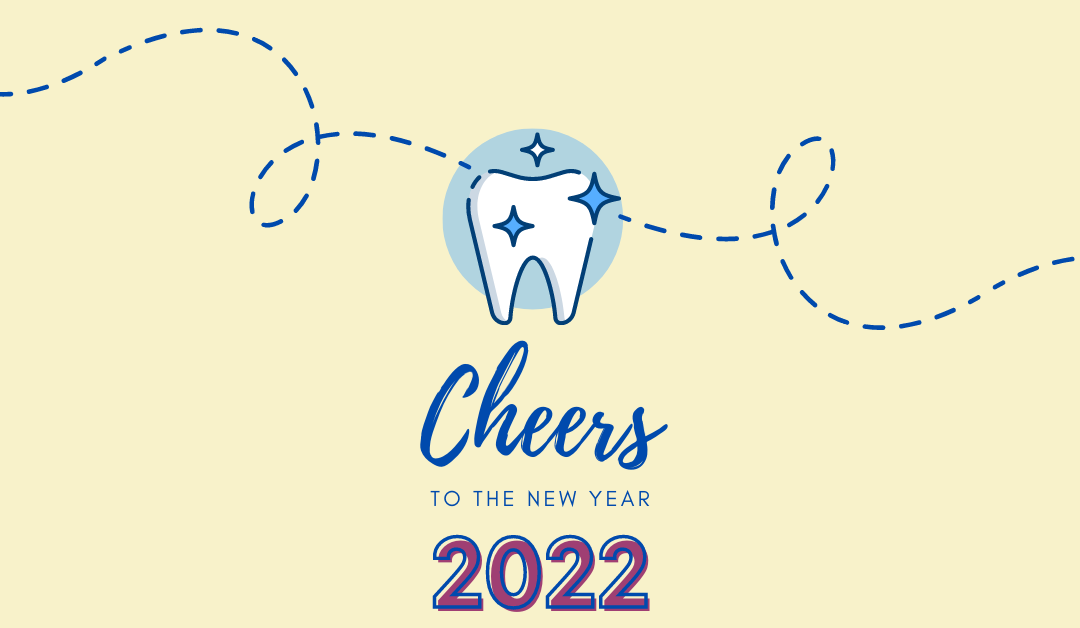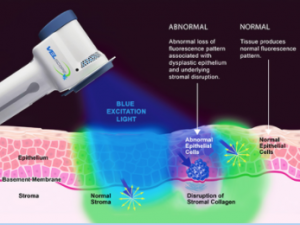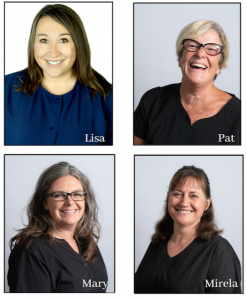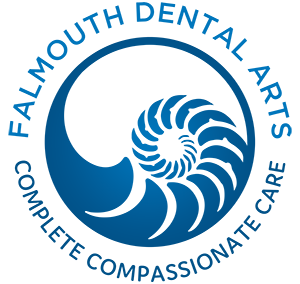
Jan 10, 2022
The new year brings an excellent opportunity to update your health and wellness habits. At Falmouth Dental Arts we often talk about how part of your overall wellness is good oral health, so this year, why not commit to having the healthiest smile possible, starting with this list of dental health resolutions:
1) Get a Fresh Start with a New Toothbrush
Ideally, toothbrushes should be replaced every 3-4 months, but the new year is also a great time to start fresh by replacing all the toothbrushes in your household. We recommend electric toothbrushes to our patients; they provide a superior clean and help keep your gums healthy. If you prefer a traditional toothbrush, look for one with soft or ultra-soft bristles. Choose a toothpaste that is ADA-approved and contains fluoride.
2) Brush Up on Your Technique
Are your brushing skills up to speed? Proper technique includes brushing gently for 2-3 minutes, twice a day, holding your toothbrush at a 45-degree angle to your gum line. Make sure to brush every surface of your teeth, both front and back. Our team of hygienists is always happy to demonstrate “best brushing techniques” so feel free to ask at your next appointment!
3) Add Flossing to Your Routine
If you are skipping the flossing step in your dental routine, this is the perfect time to make a positive change. Start with once a week and then build up to a daily flossing habit. Also, if you find that you often forget to floss at night, try a different time of day or set a reminder on your phone. Using water flossers or regular floss will help clean food and plaque from between your teeth, helping to keep your gums healthy.
4) Use a Mouthwash
Studies show that using mouthwash on a regular basis is beneficial to your mouth, teeth, and gums. Rinsing with mouthwash gets to the places that toothbrushes can’t, cleans your whole mouth (including your tongue), and freshens your breath! Our hygienists recommend Oxyfresh mouth rinse, an alcohol and dye free formula flavored with essential oils.
5) Drink More Water
Drinking 6-8 glasses of water a day is good for your entire body, and your teeth are no exception. Water is by far the healthiest beverage choice, and drinking a glass after every meal is a great way to rinse away bacteria and help prevent tooth decay.
6) Kick the Tobacco Habit
Ring in the new year by resolving to quit using tobacco products – both smoking and chewing. Tobacco use is linked to oral cancer, as well as tooth decay and gum problems. For help with quitting smoking, consult the Center for Disease Control’s Tips From Former Smokers or talk to our team for additional ideas and support.
7) Upgrade Your Smile
In keeping with a “new year, new you” theme, why not treat yourself to the smile you’ve always wanted with cosmetic dentistry? We offer teeth whitening, bonding, Invisalign, and more – just ask! If you have been delaying dental work, like fillings, crowns, or other repairs because you have maxed out your dental insurance plan, the new year usually resets your maximum benefits back to zero, meaning that your full allowance should now be available again. For any questions about your dental insurance coverage, feel free to give us a call at 207.781.5900 and we would be happy to look into this for you.
8) An Ounce of Prevention
Dr. Brunacini and Dr. Karagiorgos, in conjunction with our team of compassionate dental professionals, will help you to develop a hygiene schedule at home, as well as in our office. Routine hygiene visits that include digital x-rays and cleanings are the best way to address issues before they arise and to maintain your dental health in the new year and beyond!
Apr 20, 2021
April is Oral Cancer Awareness Month, which represents an opportunity for dental professionals to raise awareness about early detection and treatment for their patients. According to the Oral Cancer Foundation, although an estimated 54,000 new cases of oral cancer will be diagnosed this year, “Regular oral cancer examinations performed by your oral health professional remain the best method for detecting oral cancer in its early stages.” At Falmouth Dental Arts, we’ve had a long-standing commitment to oral cancer screening for our patients. However, you may have some questions about oral cancer or how Dr. Brunacini, Dr. Karagiorgos, and the hygienists perform screenings during your appointment. We recently posted a video on our Facebook page, and wanted to provide some more basic information about oral cancer and our screening procedures.
Some of the risk factors for oral cancer include:
- Being over the age of 40.
- Tobacco use – heavy cigarette use (especially over the age of 50) has been linked to a higher incidence of oral cancer.
- Alcohol use – heavy drinkers of alcohol are more likely to develop oral cancer than nondrinkers.
- Sun exposure – lip cancers are associated with excessive sun exposure and a failure to use sunscreen.
- Human Papillomavirus (HPV) – although HPV is an extremely common virus that will usually clear on its own, a small percentage of those with HPV will go on to develop oral cancers. Men are more likely than women to develop oral cancer as a result of HPV. A vaccine is available (up to age 45), which prevents many strains of HPV, including those which increase the risk for oral cancers.
Warning Signs of Oral Cancer
Patients should let us know if they see any white patches in the mouth or gums or increased bleeding, as these can sometimes be signs of oral cancer. A good rule of thumb is, if you notice any recent changes to your mouth, teeth or gums, or experience any pain or tenderness, it is always a good idea to let us know. There is no such thing as a silly question!
Screening and Early Detection
Oral cancer screening is an important step in identifying cancer as soon as possible. When treated early, oral cancer has an estimated 80-90% survival rate. Regular dental care is a first line of defense against oral cancer. As your dental care partners, we are an essential part of your healthcare team, and see many of our patients at least twice a year!
What to Expect from Your Oral Cancer Screening
We screen our patients for oral cancer at every hygiene appointment. Our screening methods typically include a simple visual exam of the soft tissues of the mouth. We will examine the gum tissue, lips, cheeks, and tongue. We will also palpate (gently press on) areas of the face and neck to check for any nodules or lumps. If there is an area of concern, we may offer to do a VELscope screening. VELscope is a safe, non-invasive early detection screening device that emits a blue light that quickly allows our clinicians to identify abnormal cells before they are visible to the naked eye. The graphic below demonstrates the difference between healthy cells (Normal Epithelial Cells) and abnormal cells (Abnormal or Dysplastic Epithelial Cells), that become visible under the Blue Excitation Light.

If we have any reason for concern based on our visual exam and screening, the next step would be a referral to an oral surgeon for additional consultation. An oral surgeon may decide to perform a biopsy of the area for further evaluation. Most of the time, a biopsy will rule out oral cancer. However, if the biopsy is positive for precancerous or cancerous cells, additional treatment may be necessary. Throughout the evaluation and referral process, we will remain involved every step of the way to provide support and follow-up care. If you have any questions or concerns, please feel free to contact us, as we’re here to help!
Check out our new website – its new features are sure to make you smile!
Mar 15, 2021
We are lucky to have an incredible team of Dental Assistants: Lisa, Pat, Mary, Mirela, and our newest addition Chelsey! We are thrilled to welcome another amazing assistant to our team!

You may have met one of our dental assistants while experiencing their compassionate care as they assisted Dr. Brunacini or Dr. Karagiorgos with one of your dental procedures. They are all committed to improving the patient experience so you can feel relaxed during your appointment, and they love to help people have beautiful smiles. They are a key part of our practice and really are a dream team! In honor of Dental Assistant Recognition Week this March, let’s hear some of what they have to say about their important work:
Lisa
“The people at FDA–from top down–are positive, caring, friendly, and helpful. It’s a joy to come to work each day!”
Lisa has been helping patients for 25 years. For Lisa, one of the most fulfilling parts of her job is helping patients improve their smiles with cosmetic dentistry. Lisa loves attending continuing education courses for cosmetic dentistry so she can be current with all the latest procedures.
Pat
“I love helping patients feel relaxed and at ease during their dental appointments. There are people who dread coming and some are very fearful. I understand their anxiety. I hope my presence, compassion, and experience as a Dental Assistant helps everyone have a better experience when coming here.”
Pat has been a Certified Dental Assistant for over 17 years and handles patient radiology and assists chairside for cosmetic and restorative procedures.
Mary
“Our motto is, ‘Have fun while doing great work!’ It’s all about working as a team to do the best for our patients and keep them relaxed. Everyone here helps each other.”
Mary has worked in the dental field since 1995 and is committed to communicating with her patients. “We explain things and show examples to our patients. I think this really helps them understand and feel more at ease. They’ll ask more questions,” says Mary. She truly enjoys helping people and loves seeing the results of a successful treatment. “I love knowing that our patients feel good about themselves afterward. They see the success, too.”
Mirela
“Everyone at FDA really cares – about patients and each other – and that’s what makes it work. When your co-workers create a comfortable environment for you then you can make it more comfortable for your patients in turn. It makes for a very warm and caring atmosphere.”
Mirela has worked in the dental field since 2003. With a background in pediatric dentistry, Mirela is committed to helping patients feel comfortable while receiving procedures. You can find Mirela assisting chairside and helping with laboratory responsibilities.
Chelsey. 
“I love seeing a patient’s mood change from when they sit in the doctor’s chair to when they leave the office…whether it’s a restorative case or a cosmetic case, the patient leaves much happier than when they first arrived!”
Chelsey joined FDA in 2020. With childhood dreams of entering the dental field and a formative experience traveling to Central America on a mission trip to assist a dentist with restorative work, Chelsey is now starting her new career with hands-on-training and support from the team of knowledgeable and compassionate medical professionals at FDA.
Thank you, Lisa, Pat, Mary, Mirela, and Chelsey! We are grateful for your commitment to patient care and dental excellence!
If you have questions about a dental procedure that our team of outstanding Dental Assistants help provide, or need to schedule your next appointment, please give us a call at 207.781.5900. We look forward to helping you have a healthy, happy smile!
Jul 16, 2020
All I Want for Christmas…in July is my two front teeth! It’s time to face the music: Sometimes we just don’t feel like brushing and flossing our teeth! Everyone has days when two minutes of brushing time seems like an eternity. We have a secret weapon for weary brushers: Music! Music pumps us up for sporting events, workouts, long car rides, and yes, even brushing our teeth.
We’ve compiled a playlist of 10 Songs about teeth to get you brushing your teeth and tapping your feet. These are all clean tunes, fit for family members of every toothbrush size. DJ Dentist, take it away!
1.“Crooked Teeth” by Death Cab for Cutie
Cause at night the sun in retreat made the skyline look like crooked teeth.
2. “Brush Your Teeth” by Raffi
When you wake up in the morning at a quarter to one and you want to have a little fun…You brush your teeth!
3.“Wolves Without Teeth” by Of Monsters and Men
And I run from wolves…without teeth.
4.“All I Want for Christmas” by Nat King Cole
Gee if I could only have my two front teeth!
5.“Dental Care” by Owl City
When hygienists leave on long vacations, that’s when dentists scream and lose their patience.
6.“Savoy Truffle” by the Beatles
Yes you’ll have to have them all pulled out after the Savoy truffle!
7.“Kids Just Love to Brush” by Sesame Street
I’m always in a rush! Oh Mama, I can hardly wait to brush!
8.“Cavity Search” by Weird Al Yankovic
This is it pal…Root Canal!
9.“Brushing My Teeth” by Barney
But while I’m brushing my teeth and having so much fun, I never let the water run!
10.“Baby Take Your Teeth Out” by Frank Zappa
Baby take your teeth out, it’ll be fine!
Post a video of you and your family brushing along to one of these songs–or your own favorite dental care anthem–and post it to the Falmouth Dental Arts Facebook Page!
Please note: our office opened on June 1 with new protocols and procedures in place to keep you and our staff safe. You can also read the full list of these updates on our COVID Protocol Page, easily found in the top menu bar of our website, so you know what to expect before your next appointment. If you are overdue for your appointment, rest assured we will be in touch soon as we catch up with our backlog. We do look forward to seeing you again. Thank you for being our patient!
Jul 9, 2020
If you’ve heard it once, you’ve heard it a million times: Floss your teeth! It’s just as important as brushing and crucial to preventing gum disease. And yet, only about 30% of Americans floss daily. We understand that it can be a hard habit to fit into your daily oral health routine–the floss gets stuck in your teeth, sometimes your gums bleed, and it feels like it takes forever! We are often asked if there are any alternatives to flossing and the answer is…yes! Let’s look at what other options you have for cleaning those hard to reach places between your teeth.
Water Flossing
Water Flossing is a way to clean around and between your teeth with a pressurized steady stream of water. Perhaps you’ve seen or experienced the device in our office. Water Flossers can be particularly helpful for patients with braces, dental bridges, dental implants, or gum pocketing. You can find a Water Flosser with the American Dental Association Seal of Acceptance. While more expensive than traditional floss, it is a helpful tool for reaching areas that are hard to access with floss and a great option if you find flossing difficult or painful. This is also a great alternative if you are concerned about little plastic floss containers ending up in the landfill.
Interdental Brushes
Another easy and practical option is an interdental brush. Studies have shown that when used in combination with regular tooth brushing, an interdental brush can be more effective than floss in removing plaque from between your teeth. These small, cone-shaped brushes are designed to be inserted gently between your teeth and can be rinsed and reused a few times. Patients with braces, food traps, dental bridges, or mobility issues may find this a good alternative. It’s also less of an investment than a Water Flosser.
Dental Picks
As the name suggests, these are small wooden or plastic picks that can be used to remove plaque from between teeth and gums. Picks aren’t quite as effective as floss and you risk moving bacteria around your mouth unless you use a new pick for each tooth, but they allow for better maneuverability for patients who have braces and thus some hard to reach areas. Again, it’s always important to look for a product that has the ADA Seal of Acceptance.
Whichever option you choose, the most important thing about cleaning your teeth is to do it! Find a routine that works for you and stick with it…your teeth and your gums will thank you! Also, if you experience bleeding gums from flossing this may be an early sign of periodontal disease–please be sure to inform us of any bleeding at your next visit to our office. If you have any questions about whether flossing or one of these alternatives is right for you, let us know. We are here to support you and provide you with the best oral health care!
Also, please note, our office opened on June 1 with new protocols and procedures in place to keep you and our staff safe. You can also read the full list of these updates on our COVID Protocol Page, easily found in the top menu bar of our website, so you know what to expect before your next appointment. If you are overdue for your appointment, rest assured we will be in touch soon as we catch up with our backlog. We do look forward to seeing you again. Thank you for being our patient!
Jun 15, 2020
Although we usually think of braces as a hallmark of teenage years, there are many reasons that adults could benefit from a straighter smile. The perks of aligning your pearly whites go far beyond vanity. Braces align your bite, enhancing your ability to chew food and even alleviating some speech impediments. Straight teeth are much easier to clean; better brushing and flossing reduces the potential for cavities and periodontal disease.
However, for many adult patients, the idea of wearing braces carries a sort of stigma. The team at Falmouth Dental Arts encourages all of our patients to have a healthy smile. We want to help you at every step of the journey, no matter your age! Let’s take a look at the three major types of dental braces:

- Conventional: Conventional braces consist of a single bracket, mounted to the front of each tooth with dental cement. Wire is strung through the brackets, and the shape and tension of the wire gradually moves teeth to the desired, aligned shape. Brackets can be metal, clear, or ceramic. Conventional braces boast the shortest average treatment time. However, they also are the most noticeable of the three types of braces, which can be a deterrent for some patients. With customizable rubber band options and shiny silver, conventional braces can add some extra sparkle and flair to your smile. A healthy mouth is the best accessory of all!

- Lingual: Lingual braces apply the same general concept to orthodontic alignment: brackets are cemented to the teeth, and metal wires work to straighten teeth. However, lingual brackets are cemented to the back of the tooth, not the front. This option eliminates the immediate image concerns. However, because they require a little more customization and time than conventional braces, lingual braces are typically the most expensive brace option.

- Aligners: Like a perfect mold of your teeth, aligners are customized clear trays made from an elastic thermoplastic material. Aligning treatments consist of multiple removable trays and enamel-colored “buttons” which are affixed to your teeth. The buttons allow the trays to snap into place and gradually leverage your teeth into the desired configuration. Typically, trays are switched every two weeks. However, aligners require the highest degree of patient discipline because their success relies on the patient remembering and keeping the trays in place for most of the day (typically 20-22 hours per day). Since they require more responsibility, aligners are a good option for adults. Many adults prefer aligners because the clear material is much less visible than conventional options.

Invisalign is the most recognizable brand of dental aligners. Falmouth Dental Arts now offers Invisalign treatment for our patients. If you think that you could benefit from braces of any kind, discuss the options with your doctor during your next visit. They’ll be happy to discuss the pros and cons of each option with you. If you are a candidate for Conventional or Lingual braces, you will be referred to one of the trusted local orthodontists.
Please note: our office opened on June 1 with new protocols and procedures in place to keep you and our staff safe. You can also read the full list of these updates on our COVID Protocol Page, easily found in the top menu bar of our website, so you know what to expect before your next appointment. If you are overdue for your appointment, rest assured we will be in touch soon as we catch up with our backlog. We do look forward to seeing you again. Thank you for being our patient!








